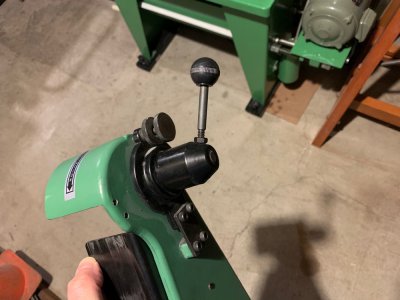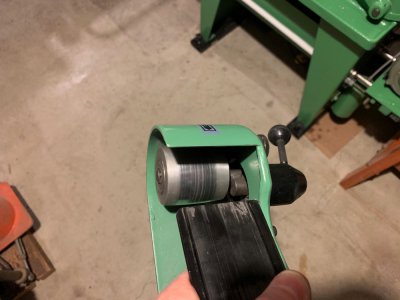- Joined
- Dec 8, 2015
- Messages
- 111
I want to build a 2” belt grinder attachment to install on my 8” bench grinder. I am not real familiar with belt grinders and have been looking at a few builds online. I was planning on using only the drive wheel and one pulley with the tracking adjustment.
Most the belt sander builds I have seen utilize a spring tensioner – to take up the slack in the belt. Since there will not be a spring loaded idler arm, the top wheel assembly (wheel and tracking adjusters) will have to move up and down to take up slack..
My question is …… Does this assembly have to be able to move while the sander is in operation – so that the spring is continually applying pressure to the belt as it runs? Maybe for variation belt thickness at the joint or length changes with humidity or ….. can the assembly be locked in place – once it is tensioned – like on the 4x6 band saws.
On one build Ilooked at, I could not see where a spring tensioner was utilized and didn’t know if that was common practice also.
Thanks
Jim
Most the belt sander builds I have seen utilize a spring tensioner – to take up the slack in the belt. Since there will not be a spring loaded idler arm, the top wheel assembly (wheel and tracking adjusters) will have to move up and down to take up slack..
My question is …… Does this assembly have to be able to move while the sander is in operation – so that the spring is continually applying pressure to the belt as it runs? Maybe for variation belt thickness at the joint or length changes with humidity or ….. can the assembly be locked in place – once it is tensioned – like on the 4x6 band saws.
On one build Ilooked at, I could not see where a spring tensioner was utilized and didn’t know if that was common practice also.
Thanks
Jim



